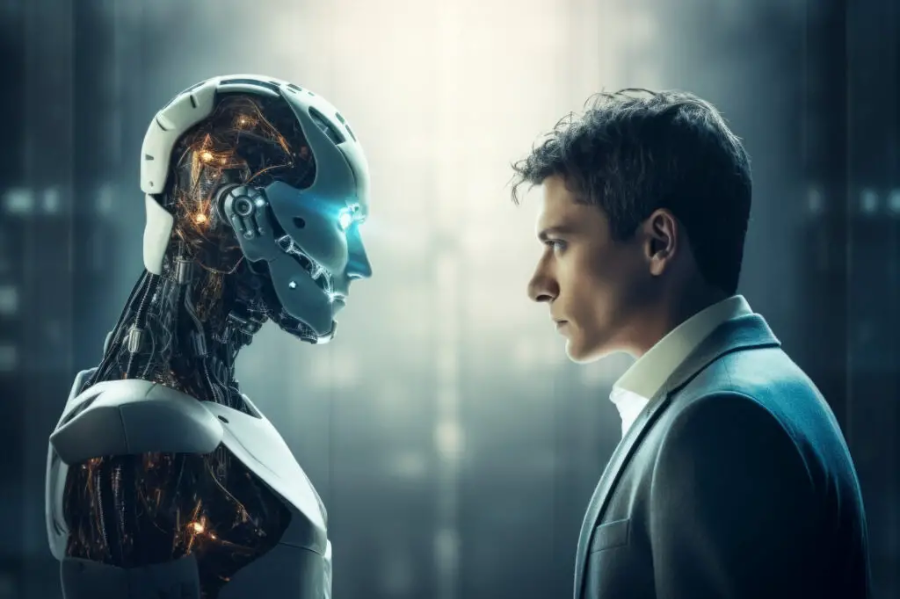The Evolution of Humanoid robots: Advancements in sensory capabilities and real-world applications
As technology continues to advance, humanoid robots are becoming increasingly sophisticated, blurring the lines between science fiction and reality. These robots are now equipped with human-like abilities such as smelling, feeling, and seeing their surroundings. Their applications extend to performing tasks that are dangerous, dirty, or dull, alleviating the burden on human workers. In this exploration, we delve into the recent strides in humanoid robot technology, focusing on their sensory capabilities, challenges faced, and real-world applications.
Sensory Advancements:
Humanoid robots are now equipped with advanced sensory capabilities that enable them to interact with the world in ways that were once deemed purely human. These capabilities include the ability to “smell” gas leaks, conduct underwater surveillance, and even sort objects by shape and color. Daniel H. Wilson, a robotics expert, emphasizes the necessity for humanoid robots to possess human-like abilities to effectively solve human problems.
While earlier robots relied on small infrared sensors and video cameras, the latest generation is making strides in understanding voices, perceiving depth similar to humans, and using grasping arms with dexterity approaching that of humans. However, these advanced robots are still in the experimental stage, and not yet fully ready to handle real-world situations.
Sorting Robot:
An example of the current capabilities of humanoid robots is the sorting robot, designed to pick up and toss boxes into the appropriate warehouse bin. Utilizing two-dimensional and three-dimensional video cameras and sophisticated software, the robot can “see” the size and shape of the box, making decisions in real time. Although effective with stationary, rectangular boxes, the challenge lies in achieving the speed and reliability required to make these robots economically viable for dynamic and varied environments.
A Sense of Smell:
The sense of smell is a significant challenge for robots, as it is more intricate than vision. Cameras can see objects with insufficient light, but odors exist in plumes and patches, making them inconsistent in strength and challenging to trace. A project from the University of Tokyo introduces a tiny robot driven by a silkworm moth responding to a female moth’s pheromone aroma. This innovative approach mimics the odor-tracking behaviors of animals, with potential applications in tracking environmental spills and leaks using highly sensitive sensors.
Achim Lilienthal’s “gasbot” addresses the difficulty of detecting gas leaks efficiently. The gasbot, resembling a lawnmower with laser beams, remotely detects methane concentrations in the air and provides a three-dimensional map of the gas plume. This minimizes direct contact with the potentially hazardous environment and enhances the efficiency of gas leak detection compared to traditional human methods.
Undersea Robots:
Creating effective underwater robots presents a unique set of challenges, including insufficient light for cameras and unpredictable currents. Inspired by the lateral line sensing found in fish, a European group developed the FILOSE robot. Shaped like a rainbow trout, the robot utilizes tiny sensors to monitor pressure differences in water flow, enabling it to navigate efficiently through currents.
The lateral line, a series of nerve cells in fish, allows them to sense speed and direction, aiding in tasks such as catching food and swimming in schools. The electronic equivalent in the form of the FILOSE robot demonstrates bio-inspired design, enhancing its ability to follow in the wake of an object and reduce energy consumption. The robot’s applications extend to surveillance with a video camera and detecting pollution using chemical sensors.
Challenges and Real-world Applications:
Despite the progress made in humanoid robot technology, challenges persist in bridging the gap between experimental success and practical applications. While these robots show great promise in controlled environments, achieving the speed and reliability necessary for real-world scenarios remains a hurdle. The goal is to create robots that are more than just toys but are economically viable tools capable of replacing or assisting human workers in various industries.
The evolution of humanoid robots, with their increasingly human-like sensory capabilities, marks a significant milestone in the field of robotics. From sorting robots in warehouses to gas-detecting robots in landfills and underwater robots navigating currents, these machines are pushing the boundaries of what was once thought possible. As technology continues to advance, addressing challenges and refining these robots for practical use in real-world situations will be pivotal for their integration into various industries and our daily lives. Humanoid robots are not just the future; they are becoming a tangible part of the present, bringing us closer to a world where they assist us in tasks that are dangerous, dirty, or dull, ultimately enhancing efficiency and safety.
Source

